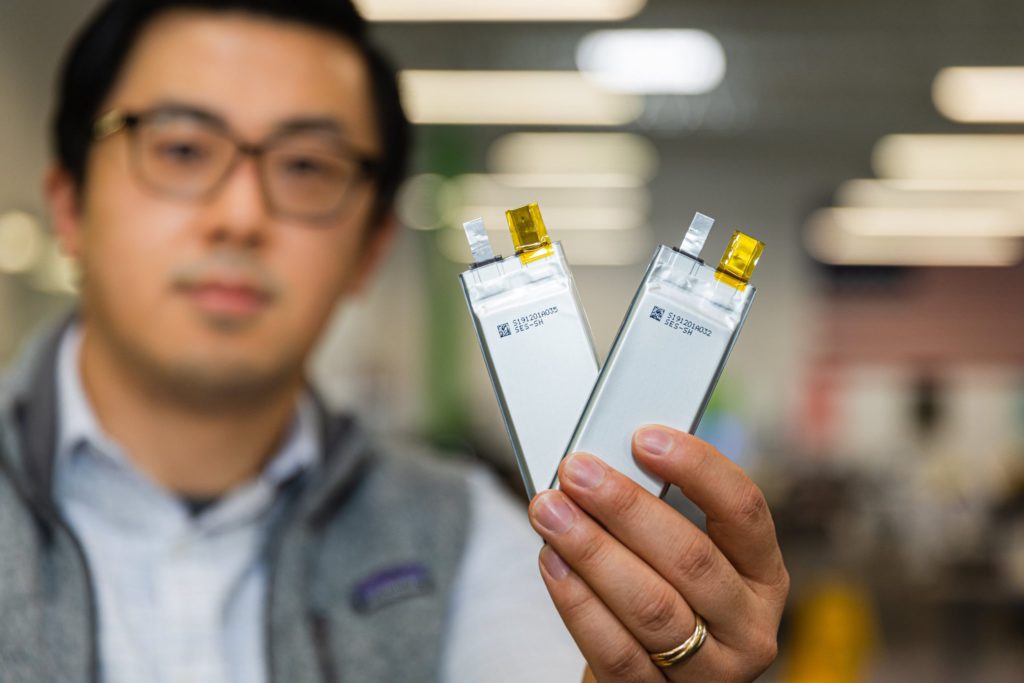
SES Holdings Pte, a startup backed by General Motors Co., is unveiling a lithium-metal battery big enough to power a car, a sign the newcomer is pulling ahead of rivals in its efforts to commercialize technology that could boost the range of electric vehicles.
Singapore-based SES, which is going public through a $3.6 billion reverse merger with a shell company led by billionaire mining investor Robert Friedland, on Wednesday is showcasing a lithium-metal battery cell with more than 100 amp hours, or units of charge. The average capacity of a lithium-ion battery cell in EVs today ranges from 50 to 120 amp hours.
Automakers, cell manufacturers and startups are spending billions to pursue battery breakthroughs that could dramatically speed up EV adoption by providing safer, cheaper alternatives to current lithium-ion technology. Batteries with a lithium-metal anode, like the one SES is developing, could provide a technological leap by making lighter, more energy-dense cells. The next challenge will be successfully commercializing the offering.
“Making lithium-metal cells of that large a format is a challenge,” said Jagjit Nanda, leader of the energy storage group at Oak Ridge National Laboratory in Tennessee. The SES product would be a “bridge between current state-of-the-art lithium-ion, and solid-state battery tech,” Nanda said. Solid-state batteries use solid materials instead of flammable liquids to enable charging and discharging.
QuantumScape Corp., which went public through a reverse merger last year, is developing a solid-state lithium-metal battery. SES is taking a “hybrid approach,” using a liquid in the cathode and a dry coating on the lithium-metal anode to suppress fire. The materials used to make batteries help determine how much energy they can store and at what cost.
SES plans to deliver its vehicle-ready cells to GM, Hyundai Motor Co. and others for road testing by the end of this year, said Qichao Hu, the battery maker’s chief executive officer. It is building a factory in Shanghai that will produce tens of thousands of the cells once completed in 2023, he said. The company aims to have its technology in the next generation of GM’s electric Hummer.
“Global carmakers are in a race to be the first to put a lithium-metal battery inside a car,” Hu said. “This is evidence that we are further along” than competitors.
The 107-amp-hour battery cell SES is touting shows “marked improvement” over what rivals have shown, though the company is still a ways off from commercialization, said James Frith, BloombergNEF’s head of energy storage.
QuantumScape, which is a competitor to SES, hasn’t disclosed the capacity of the lithium-metal battery it is developing. The company said it has already shared data showing that its cells meet automotive requirements in real-world conditions. QuantumScape also said making a lithium-metal battery with liquid electrolytes — as SES is doing — can make charging times take as long as five hours, which it expects will impede consumer adoption.
“To our knowledge, QuantumScape is the only company that has demonstrated excellent cycle life” and charging rates under an hour, the company said by email.
South Korea-based SK Innovation Co. is aiming to introduce solid-state batteries by 2025 and to deliver one with a lithium-metal anode by 2030. LG Energy Solution, the world’s second-largest EV battery maker, has said it should commercialize solid-state batteries between 2027 and 2030.
SES is scheduled to complete its merger with Ivanhoe Capital Acquisition Corp. by the end of this year, Hu said. Investors include GM, Koch Strategic Platforms, Hyundai, Geely Holding Group, Kia Corp. and Foxconn Technology Group.
(By Gabrielle Coppola)
Comments